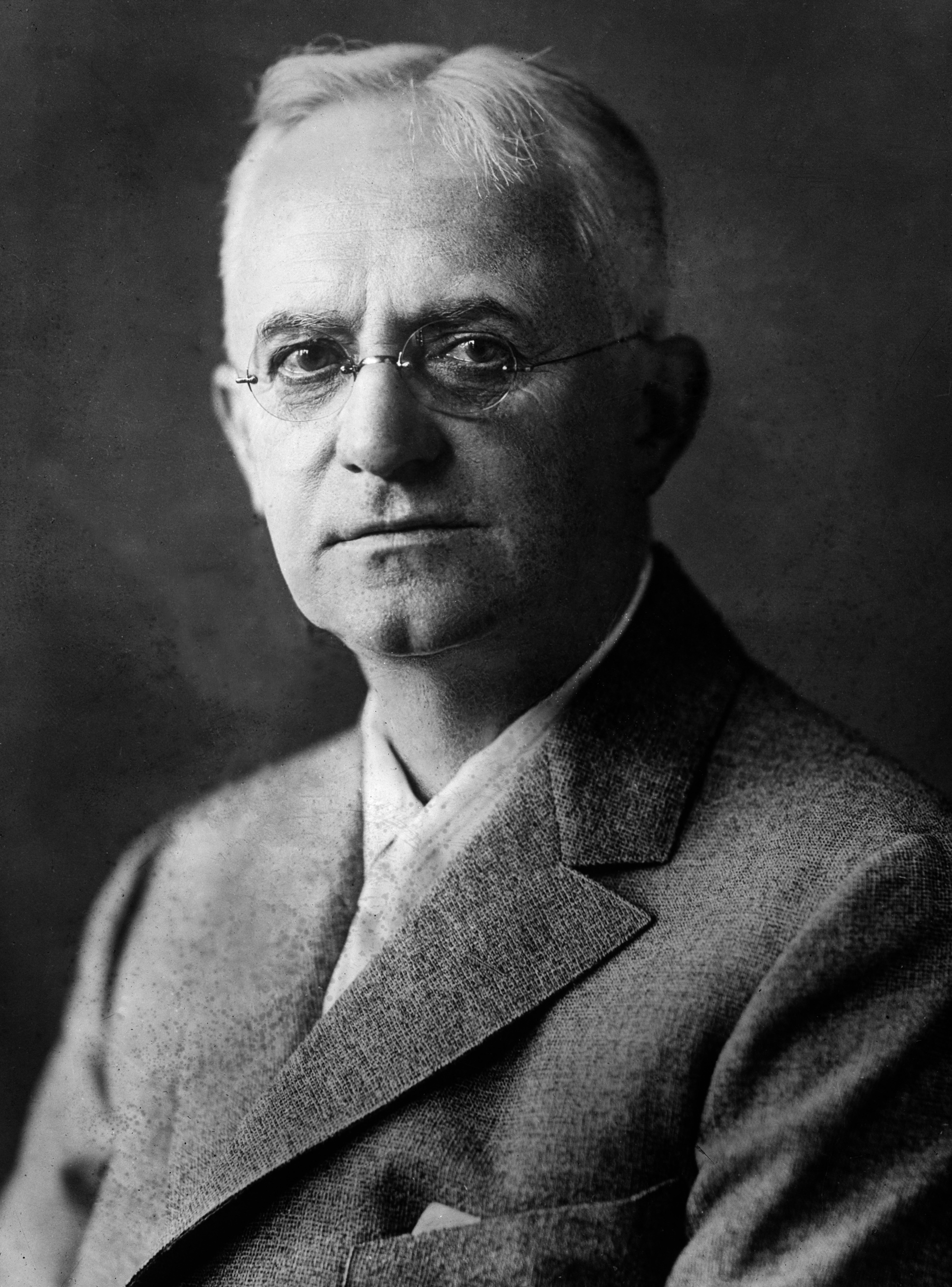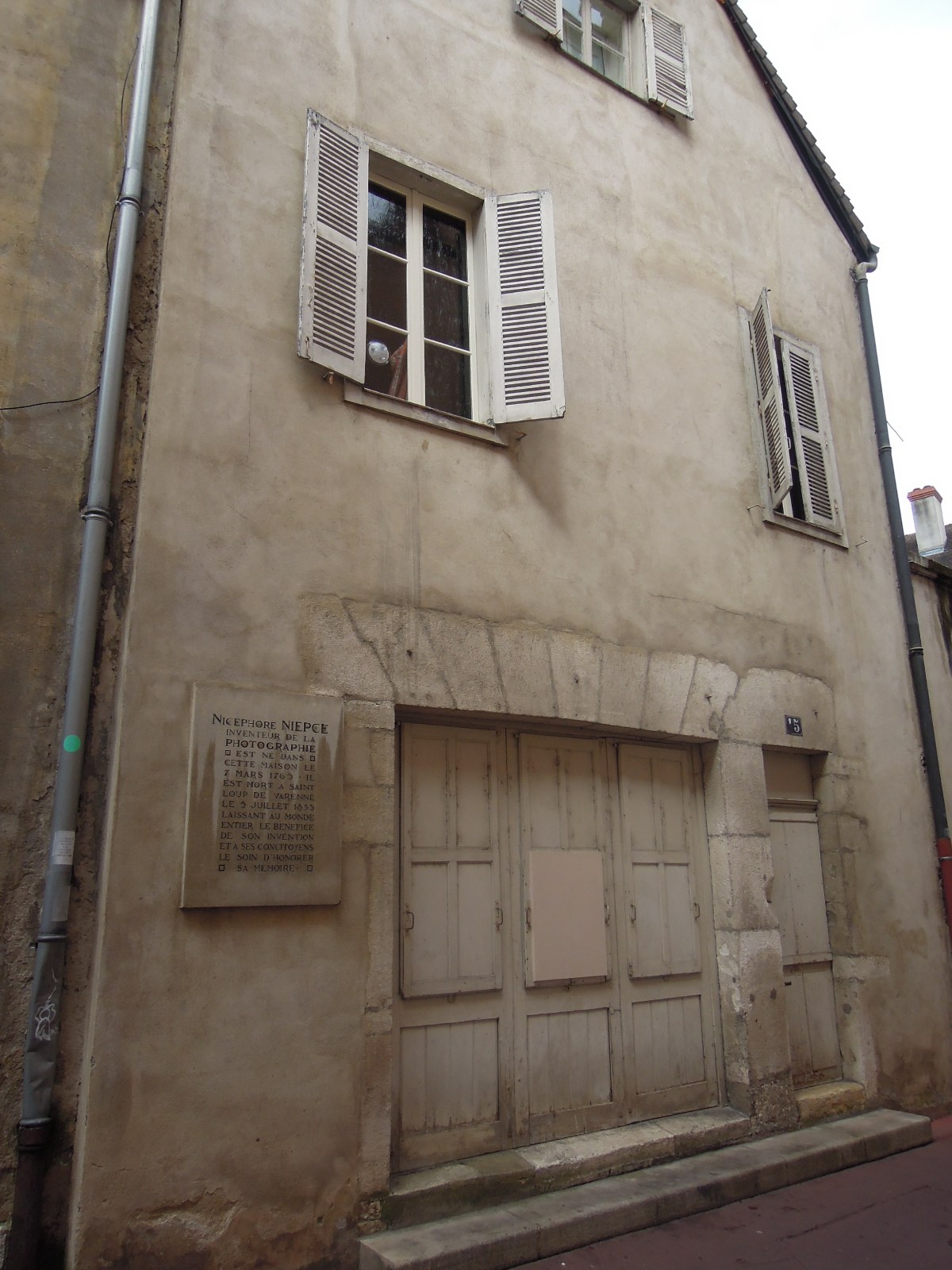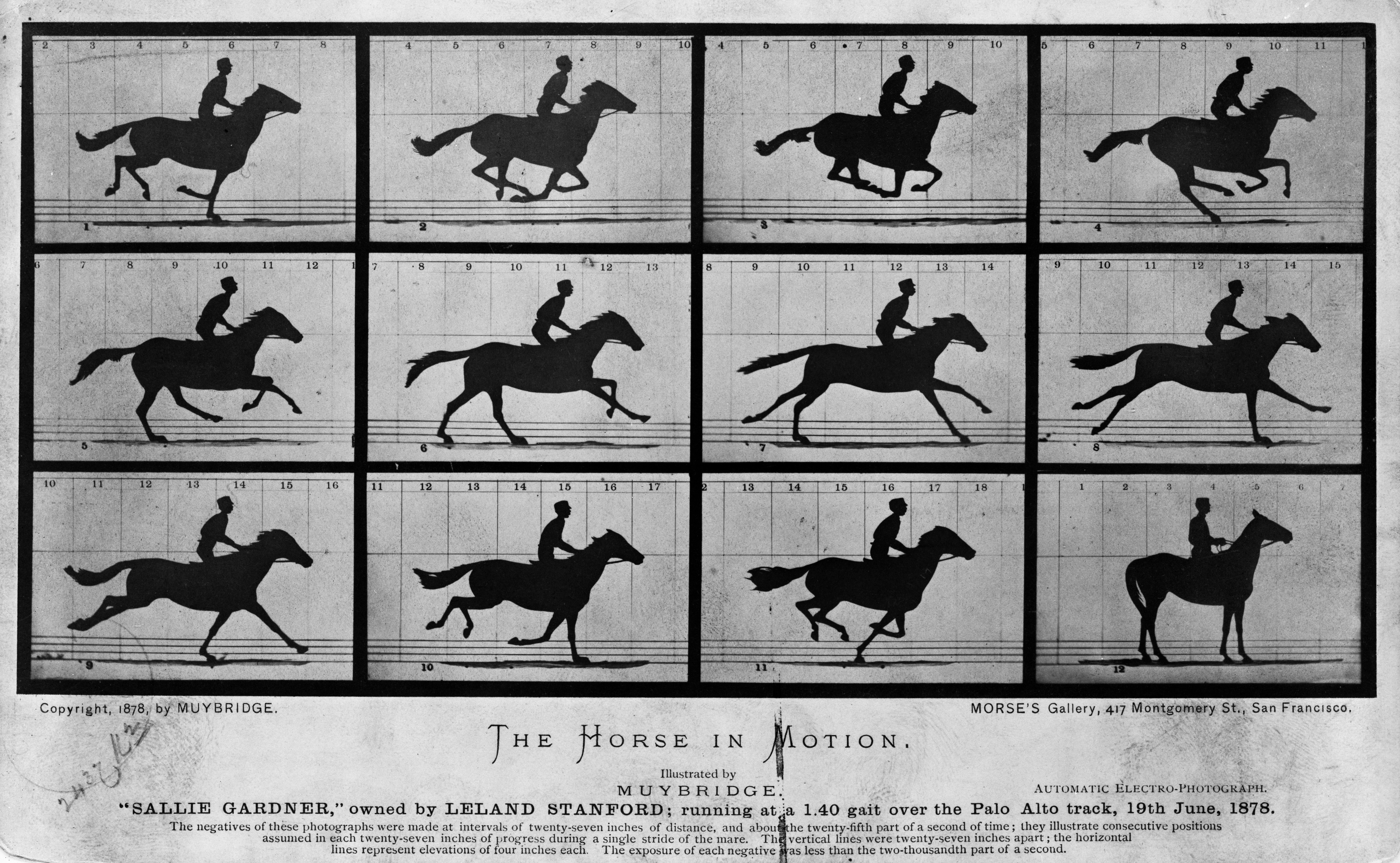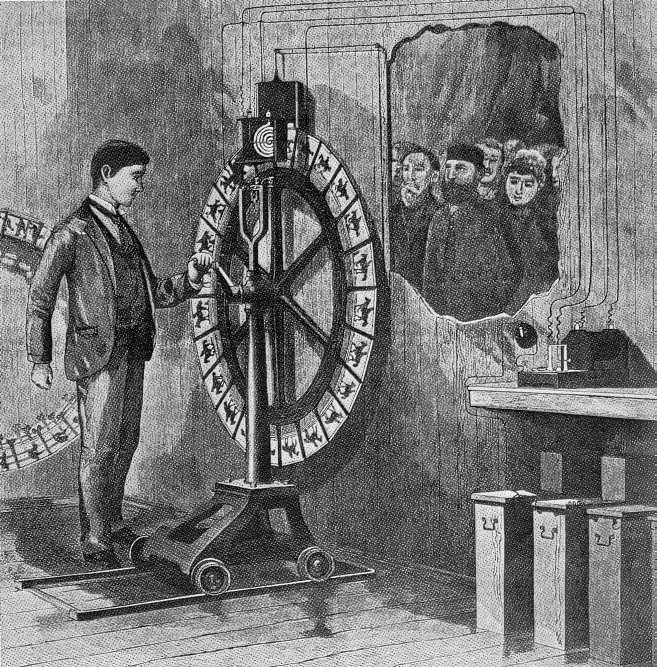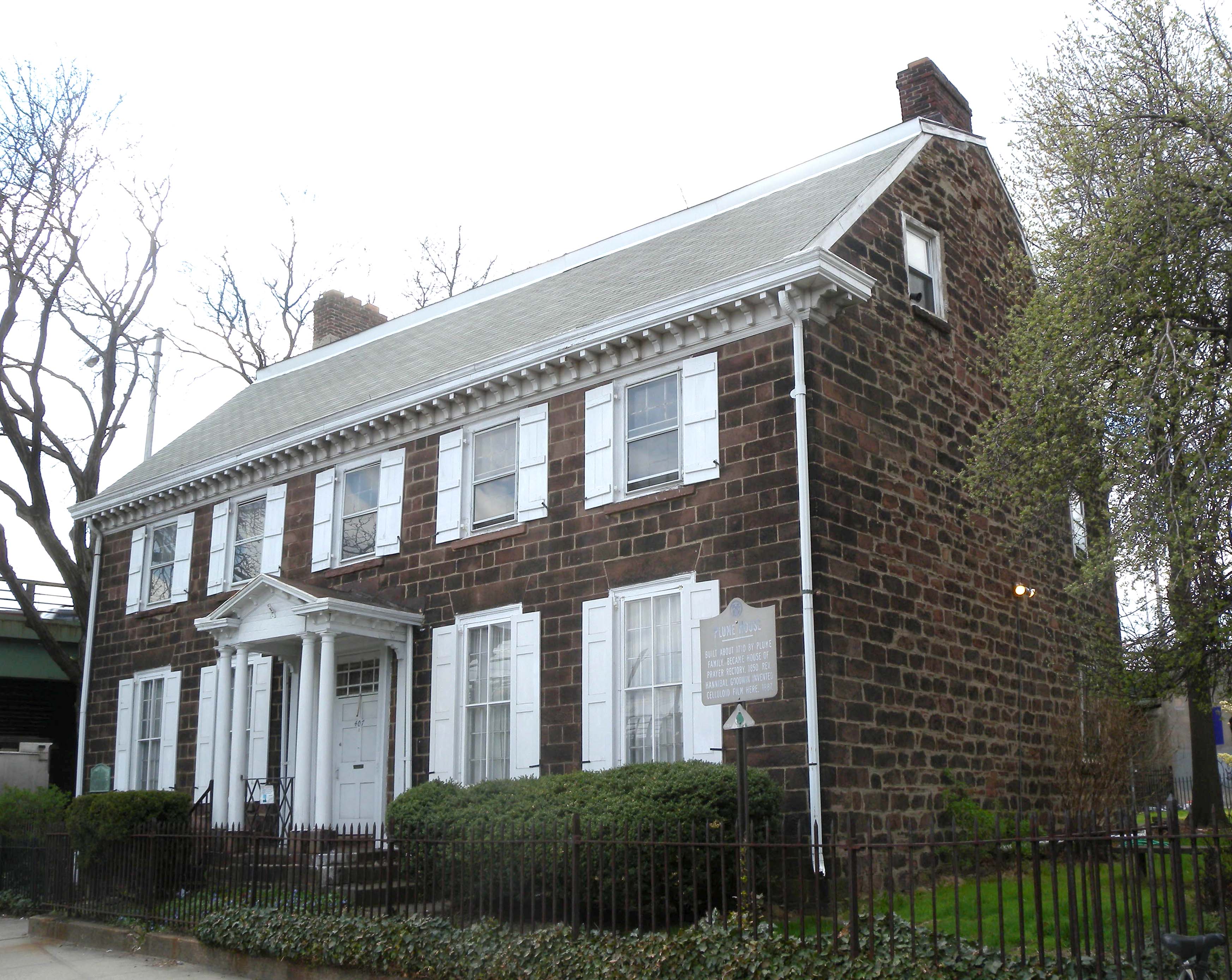|
19th Century In Film
Events * 1826 – Nicéphore Niépce takes the oldest known extant photograph, ''View from the Window at Le Gras''. * 1833 – Joseph Plateau (Belgium) introduces a scientific demonstration device that creates an optical illusion of movement by mounting drawings on the face of a slotted, spinning disk, later published as the Fantascope (and now better known as the Phenakistoscope). Simon von Stampfer (Vienna) publishes the very similar stroboscopic discs a few months later. * 1866 – The Zoetrope is introduced. The device was a hollow drum with a strip of pictures around its inner surface. When the drum was spun and the pictures viewed through slots on the side of the drum, the pictures appeared to move. * 1870s – French inventor Charles-Émile Reynaud improved on the Zoetrope idea by placing mirrors at the center of the drum. He called his invention the Praxinoscope. Reynaud developed other versions of the Praxinoscope too, including a Praxinoscope Theatre, where the dev ... [...More Info...] [...Related Items...] OR: [Wikipedia] [Google] [Baidu] |
Nicéphore Niépce
Joseph Nicéphore Niépce (; 7 March 1765 – 5 July 1833), commonly known or referred to simply as Nicéphore Niépce, was a French inventor, usually credited with the invention of photography. Niépce developed heliography, a technique he used to create the world's oldest surviving product of a photographic process: a print made from a photoengraved printing plate in 1825. In 1826 or 1827, he used a primitive camera to produce the oldest surviving photograph of a real-world scene. Among Niépce's other inventions was the Pyréolophore, one of the world's first internal combustion engines, which he conceived, created, and developed with his older brother Claude Niépce. Biography Early life Niépce was born in Chalon-sur-Saône, Saône-et-Loire, where his father was a wealthy lawyer. His older brother Claude (1763–1828) was also his collaborator in research and invention, but died half-mad and destitute in England, having squandered the family wealth in pursuit of n ... [...More Info...] [...Related Items...] OR: [Wikipedia] [Google] [Baidu] |
The Horse In Motion
''The Horse in Motion'' is a series of cabinet cards by Eadweard Muybridge, including six cards that each show a sequential series of six to twelve "automatic electro-photographs" depicting the movement of a horse. Muybridge shot the photographs in June 1878. An additional card reprinted the single image of the horse "Occident" trotting at high speed, which had previously been published by Muybridge in 1877. The series became the first example of chronophotography, an early method to photography, photographically record the passing of time, mainly used to document the different phases of locomotion for scientific study. It formed an important step in the development of Film, motion pictures for years to come. Muybridge's work was commissioned by Leland Stanford, the industrialist, former Governor of California, and horseman, who was interested in horse gait analysis. in 1882, Stanford had a book published about the project, also entitled ''The Horse in Motion'', with circa ... [...More Info...] [...Related Items...] OR: [Wikipedia] [Google] [Baidu] |
Electrotachyscope
The Elektrischen Schnellseher (literally "Electrical Quick-Viewer") or Electrotachyscope was an early motion picture system developed by chronophotographer Ottomar Anschütz between 1886 and 1894. He made at least seven different versions of the machine, including a projector, a peep-box viewer and several versions with illuminated glass photographs on a rotating wheel viewed on a 12.5 cm wide milk-glass screen by up to seven people at the same time. History Before working on chronophotography and motion pictures, Anschütz had already received much acclaim for his instantaneous pictures of flying storks in 1884. In 1885, Anschütz made his first chronophotographs of horses, sponsored by the Prussian minister of Culture. Initially, he used 12 cameras, later on 24. The quality of his pictures was generally regarded to be much higher than that of pioneer Eadweard Muybridge's chronophotographic series. He continued with studies of horses in motion at the Königlichen Militärre ... [...More Info...] [...Related Items...] OR: [Wikipedia] [Google] [Baidu] |
Ottomar Anschutz
Ottomar is a masculine given name of Germanic origin. It is derived from Audamar, a name comprised from the elements *aud, meaning wealth, and *mari, meaning fame. Other variant of the name is Othmar. The name may refer fo: *Ottomar Anschütz (1846–1907), German inventor, photographer, and chronophotographer * Ottomar Gern (1827–1882), Russian fortification engineer * Ottomar Rodolphe Vlad Dracula Prince Kretzulesco (1940–2007), German socialite * Ottomar Ladva (born 1997), Estonian chess player * Ottomar von Mayenburg (1865–1932), German pharmacist * Ottomar Pinto (1931–2007), Brazilian politician * Ottomar Rosenbach (1851–1907), German physician * Hermann Ottomar Herzog (1832–1932), German-American painter *Julius Rudolph Ottomar Freiherr von Minutoli (1804–1860), Prussian chief of police, diplomat, scientist, and author * Paolo Ottomar Malchiodi (1970 - ) Italian triathlete See also * Othmar *Omar (name) *Otto Otto is a masculine German given name and a s ... [...More Info...] [...Related Items...] OR: [Wikipedia] [Google] [Baidu] |
Film Base
A film base is a transparent substrate which acts as a support medium for the photosensitive emulsion that lies atop it. Despite the numerous layers and coatings associated with the emulsion layer, the base generally accounts for the vast majority of the thickness of any given film stock. Since the late 19th century, there have been three major types of film base in use: nitrate (until about 1951), acetate, and polyester. Nitrate In the literature of photography "nitrate" is used as a synonym for the chemical nitrocellulose. It is also referred to as "cellulose nitrate". Nitrocellulose is guncotton, the first replacement propellant for gun powder in firearms. Film stock with a nitrate base was the first transparent flexible plasticized base commercially available, thanks to celluloid developments by John Carbutt, Hannibal Goodwin, and Eastman Kodak in the 1880s. Eastman was the first to manufacture the film stock for public sale, in 1889. Unfortunately, nitrate also had the ... [...More Info...] [...Related Items...] OR: [Wikipedia] [Google] [Baidu] |
Celluloid
Celluloids are a class of materials produced by mixing nitrocellulose and camphor, often with added dyes and other agents. Once much more common for its use as photographic film before the advent of safer methods, celluloid's common contemporary uses are table tennis balls, musical instruments, combs, office equipment, and guitar picks. History Nitrocellulose Nitrocellulose-based plastics slightly predate celluloid. Collodion, invented in 1848 and used as a wound dressing and an emulsion for photographic plates, is dried to a celluloid like film. Alexander Parkes The first celluloid as a bulk material for forming objects was made in 1855 in Birmingham, England, by Alexander Parkes, who was never able to see his invention reach full fruition, after his firm went bankrupt due to scale-up costs. Parkes patented his discovery as Parkesine in 1862 after realising a solid residue remained after evaporation of the solvent from photographic collodion. Parkes patented it as a clothi ... [...More Info...] [...Related Items...] OR: [Wikipedia] [Google] [Baidu] |
Hannibal Goodwin
Hannibal Williston Goodwin (April 21, 1822 – December 31, 1900), patented a method for making transparent, flexible roll film out of nitrocellulose film base, which was used in Thomas Edison's Kinetoscope, an early machine for viewing motion pictures. Biography Goodwin was born on April 21, 1822 in Ulysses, New York and was raised on a farm. He began taking college classes at Yale Law School in 1844, then Wesleyan University, and finally earned his degree in 1848 at Union College. Goodwin began studying at Union Theological Seminary in New York City to become a Episcopal preacher. After taking positions in Bordentown (Christ Church, 1852-1854), Newark (St. Paul's, 1854-1858), and Trenton (Trinity Church, 1859) in New Jersey, he went to California to recover his health from a bronchial complaint, serving parishes in Napa (Christ Church, 1859-1862), Marysville (St. John's, c.1859-1862), and San Francisco (Grace Church/Cathedral, 1862-1867). In 1867, Goodwin came back to New ... [...More Info...] [...Related Items...] OR: [Wikipedia] [Google] [Baidu] |
Chronophotographic Gun
The chronophotographic gun is one of the ancestors of the movie camera. It was invented in 1882 by Étienne-Jules Marey, a French scientist and chronophotographer. It could shoot 12 images per second and it was the first invention to capture moving images on the same chronomatographic plate using a metal shutter. History Étienne-Jules Marey invented it in 1882, based on the photo revolver invented in 1874 by the French astronomer Jules Janssen. Janssen invented it because he wanted to study the different phases of the sun and the movements of Venus. Marey, on the other hand, wanted to study how animals, insects and birds moved. He tried to use the chronophotographic gun to study bigger animals like horses or people, but the images superimposed on the film. Due to the slowness of the bigger animals there was no time between photo and photo for the subject to move sufficiently from the last position and it appeared all together and superimposed. Functioning The functioning o ... [...More Info...] [...Related Items...] OR: [Wikipedia] [Google] [Baidu] |
William Walker (assistant)
William Walker may refer to: Arts * William Walker (engraver) (1791–1867), mezzotint engraver of portrait of Robert Burns * William Sidney Walker (1795–1846), English Shakespearean critic * William Walker (composer) (1809–1875), American Baptist song leader and composer, compiler of ''Southern Harmony'' (1835) * William Aiken Walker (1839–1921), American artist * Blind Willie Walker (1896–1933), American blues guitarist and singer * Bill Walker (actor) (William Franklin Walker, 1896–1992), African-American film actor (''To Kill a Mockingbird'') * William Walker (muralist) (1927–2011), muralist in Chicago * William Walker (baritone) (1931–2010), singer with the Metropolitan Opera * Wee Willie Walker (1941–2019), American soul blues singer * Sugar Belly (William Walker), Jamaican mento musician Military * William H. T. Walker (1816–1864), Confederate general in the American Civil War * William Stephen Walker (1822–1899), Confederate brigadier general * Wil ... [...More Info...] [...Related Items...] OR: [Wikipedia] [Google] [Baidu] |
Photographic Film
Photographic film is a strip or sheet of transparent film base coated on one side with a gelatin photographic emulsion, emulsion containing microscopically small light-sensitive silver halide crystals. The sizes and other characteristics of the crystals determine the sensitivity, contrast, and image resolution, resolution of the film. The emulsion will gradually darken if left exposed to light, but the process is too slow and incomplete to be of any practical use. Instead, a very short exposure (photography), exposure to the image formed by a camera lens is used to produce only a very slight chemical change, proportional to the amount of light absorbed by each crystal. This creates an invisible latent image in the emulsion, which can be chemically photographic processing, developed into a visible photograph. In addition to visible light, all films are sensitive to ultraviolet light, X-rays, gamma rays, and particle radiation, high-energy particles. Unmodified silver halide crys ... [...More Info...] [...Related Items...] OR: [Wikipedia] [Google] [Baidu] |
George Eastman
George Eastman (July 12, 1854March 14, 1932) was an American entrepreneur who founded the Kodak, Eastman Kodak Company and helped to bring the photographic use of roll film into the mainstream. He was a major philanthropist, establishing the Eastman School of Music, Rochester Philharmonic Orchestra, and schools of dentistry and medicine at the University of Rochester and in London Eastman Dental Hospital; contributing to the Rochester Institute of Technology (RIT) and the construction of several buildings at the second campus of Massachusetts Institute of Technology (MIT) on the Charles River. In addition, he made major donations to Tuskegee University and Hampton University, historically black universities in Southern United States, the South. With interests in improving health, he provided funds for clinics in London and other European cities to serve low-income residents. In his final two years, Eastman was in intense pain caused by a disorder affecting his spine. On March ... [...More Info...] [...Related Items...] OR: [Wikipedia] [Google] [Baidu] |
Kingston Upon Thames
Kingston upon Thames (hyphenated until 1965, colloquially known as Kingston) is a town in the Royal Borough of Kingston upon Thames, southwest London, England. It is situated on the River Thames and southwest of Charing Cross. It is notable as the ancient market town in which Saxon kings were crowned and today is the administrative centre of the Royal Borough. Historically in the county of Surrey, the ancient parish of Kingston became absorbed in the Municipal Borough of Kingston-upon-Thames, reformed in 1835. From 1893 to 2021 it was the location of Surrey County Council, extraterritorially in terms of local government administration since 1965, when Kingston became a part of Greater London. Today, most of the town centre is part of the KT1 postcode area, but some areas north of Kingston railway station are within KT2. The United Kingdom Census 2011 recorded the population of the town (comprising the four wards of Canbury, Grove, Norbiton and Tudor) as 43,013, while ... [...More Info...] [...Related Items...] OR: [Wikipedia] [Google] [Baidu] |
